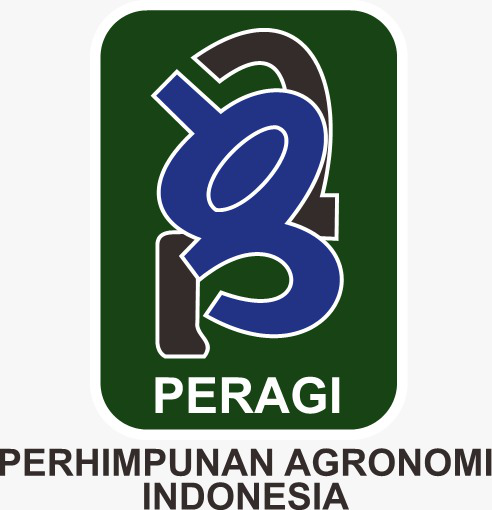Qualitative and Quantitative Characteristics of Some Tomato Varieties (Solanum lycopersicum L.)
Abstract
Tomato plants, classified as Solanum lycopersicum L., are a popular vegetable crop within the Solanaceae family, grown and utilized extensively globally. Up to the year 2020, 204 tomato varieties have been introduced by the Minister of Agriculture, with the majority being hybrid varieties developed through collaboration with national and multinational private seed companies. This research aims to identify the distinctions in qualitative attributes among rose tomatoes, bareto tomatoes, and cherry golden tomatoes. The employed research approach involves a descriptive analysis of the qualitative and quantitative attributes of various tomato cultivars, specifically cherry golden, bareto, and rose. The study findings revealed notable variations in qualitative traits among different varieties of tomato plants, including cherry golden tomatoes, bareto tomatoes, and rose tomatoes. These differences were particularly evident in growth habit, leaf color, leaf morphology, flower structure, and fruit color. Furthermore, noticeable variations in quantitative traits, such as the height of the plants, were observed at regular intervals across the different tomato varieties.Downloads
References
Avivi, S., Mufidah, A. I., Siswoyo, T. A., & Restanto, D. P. (2022). Pengaruh cekaman genangan terhadap pertumbuhan dan hasil beberapa varietas tomat (Lycopersicum esculentum Mill.). Agrovigor: Jurnal Agroekoteknologi, 15(1), 1-5. https://doi.org/10.21107/agrovigor.v15i1.8866
Daryanto, A., Istiqlal, M. R. A., Kalsum, U., & Kurniasih, R. (2020). Penampilan karakter hortikultura beberapa varietas tomat hibrida di rumah kaca dataran rendah. Jurnal Agronomi Indonesia (Indonesian Journal of Agronomy), 2(48), 157-164.
De Luna, R. G., Dadios, E. P., Bandala, A. A., & Vicerra, R. R. P. (2020). Tomato growth stage monitoring for smart farm using deep transfer learning with machine learning-based maturity grading. Agrivita, 42(1), 24-36. https://doi.org/10.17503/agrivita.v42i1.2499
Dwinanti, A. W., & Damanhuri, D. (2021). Uji daya hasil calon varietas hibrida tomat (Lycopersicum esculentum Mill.) pada musim hujan. PLANTROPICA: Journal of Agricultural Science, 6(1), 38-48. https://doi.org/10.21776/ub.jpt.2020.006.1.5
Ginting, Y. B., Yamani, H. A. Z., & Sunaryati, R. (2022). Analisis pendapatan usahatani tomat (Lycopersicum esculentum) di Kelurahan Kalampangan Kota Palangka Raya. Journal Socio Economics Agricultural, 17(1), 21-29. https://doi.org/10.52850/jsea.v17i1.4323
Laginda, Y. S. (2017). Aplikasi pupuk organik cair berbahan dasar batang pisang terhadap pertumbuhan dan produksi tanaman tomat (Lycopersicum esculentum Mill.). Jurnal Galung Tropika, 6(2), 81-92.
Lakhdari, Y., Soldevila, E., Rezgui, J., & Renault, É. (2023). Detection of plant diseases in an industrial greenhouse: Development, validation & exploitation. 2023 International Symposium on Networks, Computers and Communications (ISNCC). https://doi.org/10.1109/ISNCC58260.2023.10323932
Nur Alfiah, L., Abdilah Siregar, K., & Novianto, E. (2023). Increasing the growth and yield of tomato plants (Lycopersicum esculentum Mill) by applying palm oil compost. Jurnal Agronomi Tanaman Tropika (JUATIKA), 5(2), 330-338. https://doi.org/10.36378/juatika.v5i2.3062
Pan, F., Zhang, Q., Zhu, H., Li, J., & Wen, Q. (2023). Transcriptome and metabolome provide insights into fruit ripening of cherry tomato (Solanum lycopersicum var. cerasiforme). Plants, 12(19). https://doi.org/10.3390/plants12193505
Permata Sari, W., & Astija. (2020). Analisis tingkat keberhasilan penyerbukan bunga dari tanaman tomat (Solanum lycopersicum L.) dan pemanfaatannya sebagai bahan ajar. Journal of Biology Science and Education, 8(2), 623-629. http://jurnal.fkip.untad.ac.id
Pinayungan, R., Hayati, M., & Syafruddin, S. (2021). Pengaruh dosis pupuk hayati mikoriza terhadap pertumbuhan dan hasil pada beberapa varietas tomat (Lycopersicum esculentum Mill.). Jurnal Ilmiah Mahasiswa Pertanian, 6(4), 819-828. https://doi.org/10.17969/jimfp.v6i4.15027
Rahmat, A., Kusnadi, M., & Harahap, S. (2021). Pengaruh kandungan klorofil terhadap kualitas dan kuantitas buah tomat. Jurnal Hortikultura, 27(2), 123-134.
Sari, W., Oksilia, & Lusmaniar. (2023). Pengaruh konsentrasi pupuk organik cair terhadap komponen hasil dan hasil dua varietas tanaman tomat (Lycopersicum esculentum Mill.). Jurnal Ilmu Pertanian Agronitas, 15(1), 169-181.
Steven Cipta Putra. (2022). Fakultas Pertanian Universitas Islam Riau Pekanbaru 2022. Pengaruh aplikasi kompos limbah akasia dan pupuk NPK 16:16:16 terhadap pertumbuhan serta hasil tanaman tomat (Solanum lycopersicum L.), Fakultas Pertanian Universitas Riau Pekanbaru, 14.
Suryani, D., Pratiwi, R., & Wulandari, N. (2019). Korelasi klorofil dengan produktivitas tanaman tomat. Jurnal Tanaman Hortikultura, 18(1), 45-52.
Wahyurini, E., & Suryawati, A. (2021). Growth and yield variability performance in ten genotype of tomatoes (Lycopersicum esculentum Mill.). RSF Conference Series: Engineering and Technology, 1(1), 185-190. https://doi.org/10.31098/cset.v1i1.393
Waluyo, T. (2020). Analisis finansial aplikasi dosis dan jenis pupuk organik cair terhadap produksi tanaman tomat (Lycopersicum esculentum Mill.). Jurnal Ilmu dan Budaya, 8357-8372.
Zer, P. P. P. A. N. W. F. I. R. H., Tambunan, F. N., Rosnelly, R., & Wanayumini, W. (2023). Comparison of tomato leaf disease classification accuracy using support vector machine and k-nearest neighbor methods. Sinkron, 8(2), 939-947. https://doi.org/10.33395/sinkron.v8i2.12195
Copyright (c) 2024 Bintang Michael Purba, Siti Hartati Yusida Saragih, Kamsia Dorliana Sitanggang

This work is licensed under a Creative Commons Attribution 4.0 International License.
Authors who publish with Jurnal Agronomi Tanaman Tropika (JUATIKA) agree to the following terms:
Authors retain copyright and grant the Jurnal Agronomi Tanaman Tropika (JUATIKA) right of first publication with the work simultaneously licensed under a Creative Commons Attribution License (CC BY 4.0) that allows others to share (copy and redistribute the material in any medium or format) and adapt (remix, transform, and build upon the material for any purpose, even commercially) with an acknowledgment of the work's authorship and initial publication in Jurnal Agronomi Tanaman Tropika (JUATIKA).
Authors are able to enter into separate, additional contractual arrangements for the non-exclusive distribution of the journal's published version of the work (e.g., post it to an institutional repository or publish it in a book), with an acknowledgment of its initial publication in Jurnal Agronomi Tanaman Tropika (JUATIKA). Authors are permitted and encouraged to post their work online (e.g., in institutional repositories or on their website) prior to and during the submission process, as it can lead to productive exchanges, as well as earlier and greater citation of published work.







 More Information
More Information



